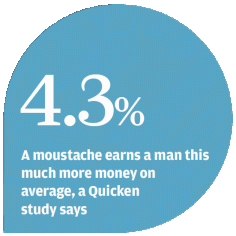
Scientists explain why hot new look won’t last
Being the odd one out may seem like a recipe for mating disaster, but it could make you more attractive to the opposite sex. So said a study yesterday which might also explain why fashions change.
Being the odd one out may seem like a recipe for mating disaster, but it could make you more attractive to the opposite sex.
So said a study yesterday which might also explain why fashions change.

Men with beards scored better when surrounded by clean-shaved faces, and vice versa.
"In some cases, rarity in ornamentation can be advantageous," said the paper, which may explain a puzzle of evolutionary science.
Under the theory of sexual selection, female animals choose mates with desirable features, which are often "advertised" through adornments such as colourful tail feathers in peacocks. Logically, these sought-after features should eventually dominate the gene pool and less desirable variations weeded out - but this is not the case.
Scientists have long been baffled by the apparent contradiction, but now believe rarity of features may explain some of it.
In guppies, fish which have the most unusual colour patterns have the most mating success - and they also happen to live the longest. But how does it apply to humans?
Past research has suggested that hair colour variation spread through Europe on the back of such "novelty" selection, and that men's preference for brown hair increases when it is rare.
The new research builds on this, giving a clearer idea of the value in being the odd one out.
It also highlights the advantages of being able to manipulate one's look.
"If men tailored their grooming in order to be distinctive ... that could confer an advantage to rare-beard styles that would decay as a style grew more popular," said the study.
This could explain why fashions keep changing.
Novelty styles boost the chance of reproductive success because they stand out. Conformists then mimic these "influential early adopters", which eventually leads to new rebels emerging in a cycle of change.
The paper was published in the Royal Society journal .
